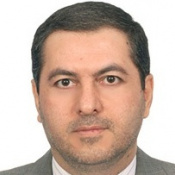
سید حسین میرجلیلی
| مدرک تحصیلی: دکتری علوم اقتصادی، دانشگاه امام صادق، تهران، ایران |
| رتبه علمی: استاد اقتصاد پژوهشگاه علوم انسانی و مطالعات فرهنگی |
| پست الکترونیکی: seyedhossein.mirjalili@gmail.com |
| وب سایت شخصی: http://hosein.mirjalili.com |
مطالب
How to Escape the Middle Income Trap in Iran? Lessons from Malaysia, Thailand South Korea and China(مقاله علمی وزارت علوم)
کلید واژه ها: middle income trap economic growth Productivity Human capital Education
Climate Change and Crop Yields in Iran and Other OIC Countries(مقاله علمی وزارت علوم)
کلید واژه ها: climate change Agricultural productivity OIC countries Temperature Precipitation Employment
ارزیابی نظری رویکرد ساختارگرایی جدید در اقتصاد توسعه: مزایا و چالش ها(مقاله علمی وزارت علوم)
Development Plans, Economic Indicators and Planning Challenges in Iran (1979-2022)(مقاله علمی وزارت علوم)
Inflow and outflow of oil revenues: Scenarios for National Development Fund of Iran(مقاله علمی وزارت علوم)
اقتصاد نئوکلاسیک
نخستین مکتب های اقتصادی(مقاله علمی وزارت علوم)
کلید واژه ها: اندیشه اقتصادی مکتب اقتصادی سالامانکا مرکانتی لیسم فیزیوکراسی
مکتب کینزی جدید
آشنایی با مکاتب اقتصادی: مکتب حاکمیت طبیعت فیزیوکراسی
تجدید حیات کلاسیک ها در اقتصاد: مروری بر مکتب ها(مقاله علمی وزارت علوم)
کلید واژه ها: کلاسیک ها مکتب اقتصادی بانکداری آزاد اصالت فایده کلاسیک جدید نئوریکاردویی
آشنایی با مکاتب اقتصادی, مکتب کلاسیک
آشنایی با مکاتب اقتصادی مکتب بانکداری ، مکتب پول (در گردش) و مکتب بانکداری آزادگ
اندیشه های اقتصادی ابن خلدون؛ ارزیابی انتقادی چهار ادعا(مقاله علمی وزارت علوم)
کلید واژه ها: اندیشه اقتصادی ابن خلدون اقتصاد اسلامی اقتصاد اسکولاستیک مکتب سالامانکا ماتریالیسم تاریخی
چگونگی شناسایی تنگناهای رشد اقتصادی (نقد روش های مرسوم و معرفي روش آسیب شناسي رشد)
مکتب پساکینزی
مکتب کینزی
الزامات دستیابی به رشد هشت درصد (مروري بر تجربه سيزده کشور)
نقش تجارت در انتقال فناوری(مقاله علمی وزارت علوم)
جهانی شدن بانکداری و ضرورتهای ناشی از آن در بانکداری ایران(مقاله علمی وزارت علوم)
کلید واژه ها: جهانی شدن، بانکداری فرامرزی، آزادسازی تجارت، ایران